I grew up as a young child living in a house on the corner of Campbell and Hastings, where the RayCam Co-operative Centre is today, then spent my teenage years in Raymur housing project with my mom and sister. We moved there in 1967, into a 600-square-foot, two-bedroom apartment on the 12th floor of 400 Campbell Avenue, looking west across the city. For my mother, that view, and the time it gave her with her thoughts, was her saving grace as she met the challenges of raising two kids, first on welfare and then a minimum wage job.
I remember grocery shopping with my mom and making trips to the Woodward’s food floor. Double features at the Lux and Majestic theatres on Hastings Street. Shooting pool at International Billiards, better known as Yama’s for the family that owned it. Steam’s Hot Dogs, Only Seafood and more than a couple of pubs that turned a blind eye on age, as long as I tipped and wasn’t being an ass. The Army & Navy department store was a going concern. The Carnegie was in the last vestiges of its life as a museum, but still a magical place to visit. Chinatown was flourishing, while Gastown emerged as a bohemian hangout in the hippie days.
Today’s reality in the Downtown Eastside is very different. The neighbourhood is home to an increasingly street entrenched population and a poison drug supply that is killing them.
There’s not enough housing and, what is there, is too often uninhabitable. All of this within the context of deep poverty and rampant mental health issues. More than ever, this is a community in crisis. There is a public consensus that government needs to act. Though, I suspect, there is less agreement on what those actions should look like.
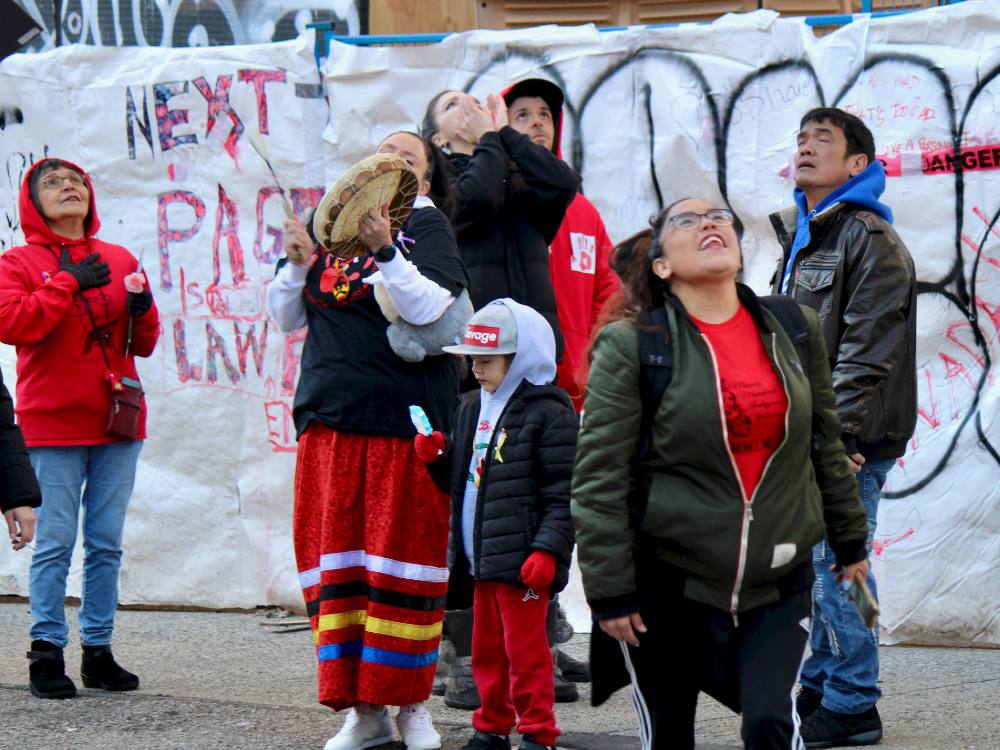
How to thrive, not just survive
It’s time to rethink our approach. To move forward with a strategy that both addresses the immediate needs around housing and addictions while starting to rebuild the community in collaboration with the long-term residents. This needs to include opportunities for people who are looking to improve their lives. It cannot simply be about making survival a little easier.
Governments have responded to the DTES in a variety of ways over the years. Some simply wanted it to go away, a view embraced by a number of Non Partisan Association city councils until mayor Philip Owen had a revelation and championed the Four Pillars harm reduction strategy. That was a decision that ultimately cost him his support inside the NPA and his job as mayor. Others blamed the people living there and were ready to punish them for their consequence of being poor and vulnerable. Yet a majority of the population wanted, and continue to want, to help lift people up and make the neighbourhood better.
I was the MLA of Vancouver-Hastings for over 15 years, from 2005-20. During most of those years, the provincial government provided few supports to those living in poverty, including in the DTES. For 16 years there were no increases in income assistance rates and, it could be argued, the BC Liberal government of the day was ready to punish organizations that it saw as overly critical of government policies and actions around poverty and our most vulnerable citizens.
Did the provincial government I was part of, starting in 2017, make things better? Yes, I believe it did. We increased income assistance rates. Legislated a poverty reduction strategy with targets and timelines. We stewarded a more engaged relationship, including better support for service providers. We increased housing, particularly modular units. We created more targeted mental health and addiction services, including a dedicated ministry.
But did those efforts solve the problems? Not even close.
Over the years, numerous strategies that sought to be the solution have been talked about and tried, but none fully realized. Attempts at revitalization through new development fizzled like the failed casino/convention strategy. The Four Pillars strategy was a positive approach that never quite saw all the pillars embraced. Then there was the Vancouver Agreement, an effort to bring all levels of government together to develop and implement a new strategy for the DTES.
While most people in government are well-intentioned and want to make things better, I certainly understand why people living and working in the DTES are skeptical. Because rather than improving, it has gotten worse.
Regardless of sincere intentions and significant resources committed, government has only moved the dial marginally. During my time as minister of Social Development and Poverty Reduction from 2017-20, I called on my staff to determine a top-line number for spending in the DTES community: $500-550 million annually and growing was the best assessment. This covers health care, housing and income supports, safety and an array of other services delivered either directly by government or through primarily non-profit service providers in the DTES. These funds, while mostly provincial, come from all levels of government, though there has never been a meaningful assessment of where the dollars are coming from and how they are being co-ordinated for maximum impact.
It is time to rethink this. To establish a forum where discussions around a better future for the DTES can occur, one that includes all levels of government, service providers and the people who live in the community. A forum that is ready to challenge decades of assumptions and expenditures and has the authority, capacity and mandate to address what is working and what is not. How we got here and what we need to do better. All while continuing to deliver essential services and striving to meet people’s immediate needs, as this bigger conversation unfolds.
This idea is not new. We have heard from governments about "putting someone in charge," creating a "czar" for the Downtown Eastside, to make things happen. If a new initiative were to unfold, it is essential that it be developed with significant local input. This cannot be solely politicians, bureaucrats and academics coming to fix the problem. It has to be grounded with the community.
To be clear, this would also put a significant obligation on the community to look for progress and improvements that likely don’t fix the problems entirely. It is understandable that many in the community feel under siege and react accordingly. The reality is improvements that happen will be incremental.
What those improvements look like and how they are delivered needs to be developed in conjunction with the community, and not from on high. There are many people, both inside and out of the DTES, who have ideas for addressing the complex issues the community faces.
As someone who has lived in and worked with the community over many decades, I have come to realize there are many issues and complexities to address.
Here are foundational issues that need to be part of any discussion.
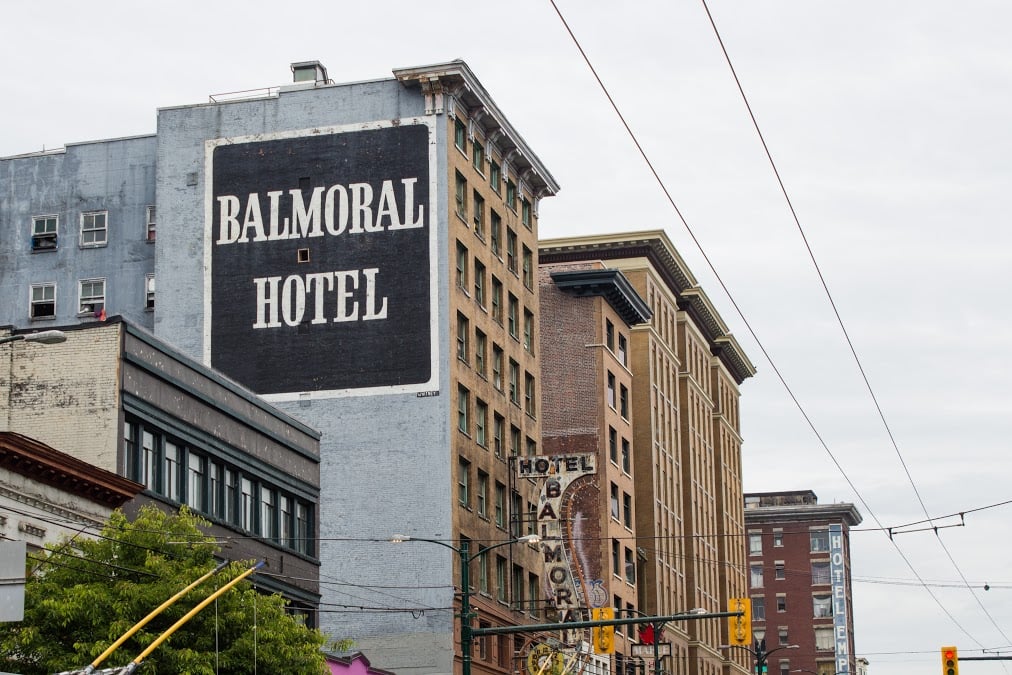
1. Gentrification must be paused
Gentrification has seriously eroded the Downtown Eastside I grew up in. While community change should be expected and renewal seen as a positive thing, it is harmful when it excludes or alienates the people who call the neighbourhood home. This happens when decisions around development are driven by money and the impacts on community and any sense of balance is lost by a narrow bottom line of profit, with little real regard for the impacts on the people who call the community home.
Gentrification was triggered by Expo 86, the transportation and communications world’s fair that was held in Vancouver. This was a major event, lasting six months at a cost of around $1 billion and drawing over 22 million visitors to the False Creek site where the Expo was held. Many of the single-room occupancy landlords decided the six-month run of Expo 86 was too great a potential windfall to pass up. They evicted their long-term tenants from their homes, maybe 1,000 people, added some new furnishings, a cleaning and a coat of paint, then charged three- or four-star hotel nightly rates to Expo visitors.
While there is greater sensitivity to the issues of gentrification today then in 1986, it continues to eat away at today’s Downtown Eastside. The footprint of the neighbourhood has shrunk by more than half over the years as money comes to the table, real estate is bought and upgraded. More high-end businesses came to Gastown and the surrounding area to support the increasingly well-heeled people moving into the loft apartments and condominiums with waterfront views.
This is a critical factor in the difficulties we see today. People need space. Particularly when so many live in single rooms with much of their life on the street. Community voices have for years warned about gentrification and its impacts. What we see today is the realization of those concerns. This was likely inevitable, in a city like Vancouver, with the dormant value sitting in those buildings waiting for someone to come along and exploit it.
Gastown is a classic example. The arts and creative community came to make this neighbourhood home, and as is too common, developers followed close behind as the appeal to live in these communities grew. The consequence is increased land values, a changed culture and, as people are pushed to the fringes, a different community emerges.
Some argue the biggest impact may have been the Woodward’s redevelopment. While there was much community support for building anew at Woodward’s with social housing and other community amenities, it also triggered radical change. The vacant stores across Hastings Street were quietly picked up by developers who waited to see if this mixed-use housing development, with a majority of market condominiums, would trigger the change they anticipated. And they were correct. Interestingly, as the DTES has deteriorated further, many of those storefronts appear vacant again.
Woodward’s redevelopment brought many positives to the DTES, including more social housing and educational opportunities. It was done with the best of intentions. But there is little doubt it was a key driver in the gentrification squeeze from the west.
There certainly have been efforts to manage development in the DTES previously, but today’s crisis requires more attention. Bringing a pause to gentrification is critical. If the desire is to revitalize this community, to assure long-term residents this is not simply about money, it will take time. Deciding how to protect the heritage while meeting people’s housing needs will be a challenge. Seeking ways to bring back the small businesses, cafes and shops that fit the community will be hard — if possible at all.
We need to draw a circle around the core community, restricting development that isn’t deemed to be of direct benefit to its most vulnerable citizens. Not a forever ban, but long enough for a plan to evolve and be implemented, needs to be a real consideration.
This is particularly critical as the new St. Paul’s Hospital precinct develops on Station Street, on the southern edge of the Downtown Eastside. The demands in and around the hospital precinct, to meet the needs of both their workers and related services and business, will be great.
Chinatown, the DTES’s neighbour, is more welcoming, I suspect, of some level of increased gentrification. Chinatown has struggled with increasing financial challenges as the Chinese community has spread beyond the area, and as complex issues stemming from poverty and the toxic drug crisis have intensified in the neighbouring DTES.
The challenges Chinatown faces are very real. A new group of younger leaders is emerging with a commitment to revitalize the community, restoring it back to a previous time when the streets were busy, restaurants and shops were in abundance and the community was alive, giving us all an opportunity to experience a small piece of this wonderful culture. As plans evolve, the reality is neither of these communities is going away. It is in both of their interests to continue to make efforts to collaborate on problem solving.
I am not certain this can work, but it certainly is desirable and likely essential if either or both communities are going to realize solutions to their problems.
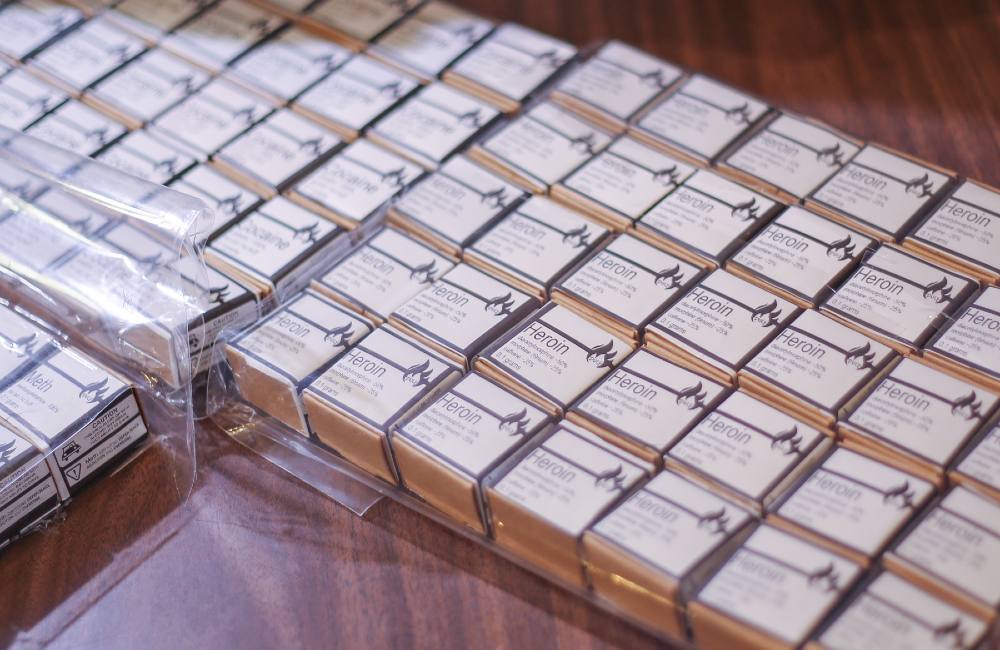
2. We need a safe supply of drugs
A fatal and harsh reality is the growing number of deaths from toxic drugs. This came with the arrival of predator drug dealers in the community.
No longer was it just the guy who lives in the area supporting their own habit and making a little money on the side selling heroin. Vancouver Sun journalist Kim Bolan laid out the challenge in an article from August 2021. Organized crime brought these new lethal drugs in, recruited those with addictions to sell for them and took the money out. They care little about who dies today, confident there will be someone else to buy the poison they’re selling tomorrow.
Unfortunately, too often, they are not the people we are arresting. Putting those truly responsible in jail for longer terms and replacing their poison with an unadulterated, regulated safe drug supply is a necessary step in addressing the tragedy facing us today.
Frontline health-care providers will tell you that decades of drug use has resulted in brain injury and serious psychosis that is too often irreversible for some people. They are health conditions that current practices and services in the community are not equipped to effectively support.
The severity of these mental health challenges raises public safety issues, both for the individual and those they interact with. While institutionalization is a bad word for much of the community, there is a relatively small number of people for whom this is likely the best option: a small group of people who are a serious risk to themselves and others.
The ability to essentially incarcerate people under the Mental Health Act exists today. What isn’t clear is where the services are to support any such action.
There is a need for more residential services. The challenge is how those institutions would operate and be held accountable to ensure their services are both available and making a difference. Recent provincial government announcements suggest more resources are coming for the most severe cases.
From the larger population of drug users, there is a demand for new options to manage addictions, keep people alive and, when they are ready, support people in breaking their addiction. It starts with responsive supports including enhanced detox and rehab services that are available essentially on-demand.
We are doing better, with more to do in that area. And that is about an administered safe supply of drugs: drugs that don’t kill people and strive to push the criminal element out of the equation. A supply that is available to those who need it without cost, ending their struggle, often through petty crime, to pay for their addiction.
Safe supply needs to occur with a substantial research component, similar to the process used with Insite, the safe injection site. While there is significant international research on this issue, including by the BC Centre for Substance Use, it will be necessary to demonstrate that the B.C. model, however that is structured, is achieving its objectives.
While a number of people were both uncomfortable with and skeptical about the Insite initiative, research and analysis have shown the harm reduction model to be effective, to have saved lives and often been a doorway for those seeking help to break their addiction. That is reflected in the consensus of health professionals, police and community about the benefit Insite has brought to the community.
Safe supply should face the same rigour.
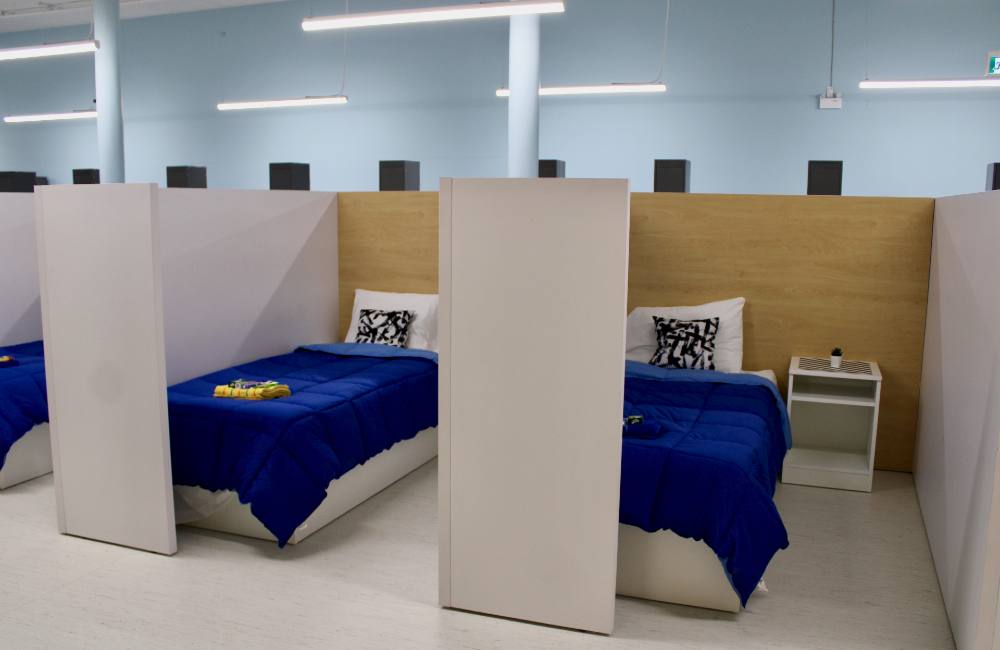
3. We need secure housing
Without secure housing, it is not realistic to expect anyone to successfully manage other difficult life challenges. I cannot imagine how people are expected to deal with complex issues like mental health, addiction and poverty when they do not have a safe secure place to hang their hat at the end of the day.
The highest profile of the crisis in the DTES today are the tents along Hastings Street. There was nothing safe about that situation, and the tents needed to go. The city moved, with police support, to take down the encampments, but the core argument the community makes, where do you expect us to go, is compelling.
Until there are real, improved housing options, the recent actions by the city and VPD, while it appears largely handled in a measured way, won’t fix the problem. While I am certain they spoke with the province and BC Housing, they clearly did not speak to anyone in the community, including service providers. As a result, there was no meaningful preparation to support people in the way necessary. Adopting this type of strategy, in a covert and secretive fashion, simply does not work. That is becoming more clear as we see the fallout in the days following the initial actions. I suspect tents will remain a reality in the community, at least until the recently announced 330 units of provincial housing that is to be ready for June are realized and available, and likely longer.
Provincial and city governments have worked hard in recent years to build more housing, but there is much more to do if we expect to improve the DTES. It will require more resources and a rethink of where and how new housing gets built. It also demands the federal government step up, in a substantive way, after abandoning housing responsibility in 1993.
Have the feds got better in the last few years? Yes they have, but it has not made up for what they stripped away. There needs to be significant development within the borders of the DTES, for those who call the community home. It likely starts with a multi-year aggressive campaign led by British Columbia, with local and federal support, to purchase the SROs in the broader DTES, do interim upgrades where necessary and then start a transition to demolition and new social housing.
Both the B.C. premier and the Vancouver mayor have declared housing a top priority and a new Ministry of Housing has been established to meet the challenge. With greater political will and increased resources, I am hopeful short-term problems can be addressed. Likely, with more modular housing that can be built relatively quickly and has proven effective in meeting many people’s needs. Recent B.C. announcements of 330 new units by June is a positive start.
While a significant portion of new housing needs to be located in the DTES, we need to build across Metro Vancouver. There is need across the region, and we know there are a number of people in the DTES, who would prefer an option outside that community.
All communities have a responsibility to accept a share of social housing, including for our most vulnerable citizens. We need the resolve to break through the nimbyism that is too prevalent across the region. Local communities should be engaged in how they absorb this housing, but they should not have the option of saying no to the housing entirely. It is encouraging that both provincial government and city council policy is moving in that direction.
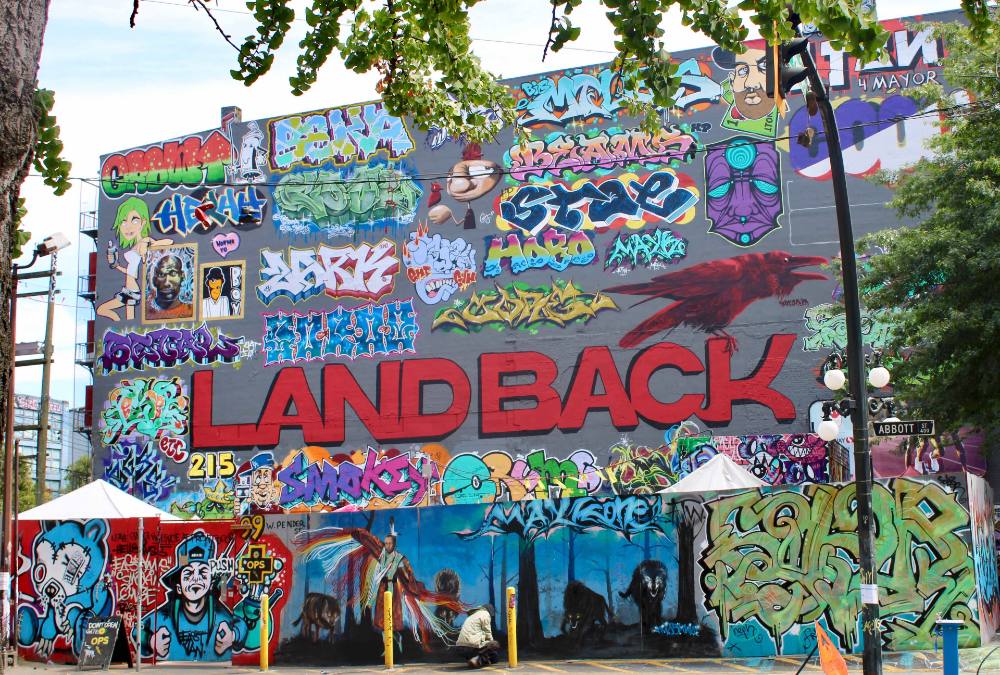
4. Meaningful reconciliation and Indigenous relationships are key
Any meaningful solutions for the DTES must have First Nations as partners. While Indigenous people make up about three per cent of Vancouver’s population, they comprise around 30 per cent of people in the city who are unhoused and street-entrenched and living as survival sex workers, based on the Native Women’s Association of Canada’s 2014 report, Sexual Exploitation and Trafficking of Aboriginal Women and Girls. It’s a report whose numbers are likely conservative today.
The DTES was the epicentre for the Missing and Murdered Indigenous Women and Girls tragedy. While the true number of Robert Pickton’s victims is unknown, the pall it has cast over the community remains. Particularly as this violence is not limited to the tragedy of Pickton.
The most severe consequences of residential schools, including the generational trauma that was inflicted on a whole people, continues to play out today. The focused, racist efforts to wipe out a total culture, “to take the Indian out of the child,” as former prime minister John A. Macdonald described it, was nothing short of genocidal. This ongoing trauma has manifested itself in the DTES and elsewhere.
First Nations service providers are well-established in the community. Delivering general supports but, more importantly, culturally engaged services that have a critical impact.
When we were bringing the Oppenheimer Park encampment to an end in May 2020, local Indigenous leaders brought drummers, prayers and Elders every morning to the park. This was significant in creating an environment to help move people relatively smoothly.
As government thinks through what needs to happen to change the DTES’s fortunes, Indigenous groups, leaders and Elders will be essential partners.
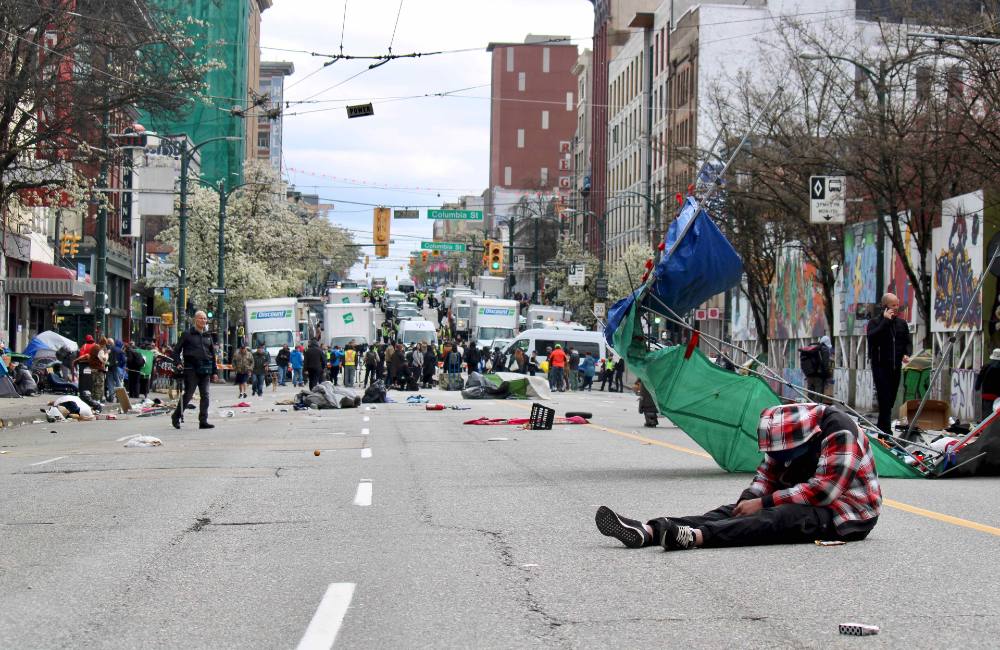
5. Income and disability assistance needs a serious rethink
The foundation of much of the dismay in the DTES is poverty. People need more money. Former premier John Horgan’s provincial government raised assistance rates about $100 per month over its term, more than a 50 per cent increase overall. It improved a desperate situation after 16 years of, essentially, no increases.
Those increases have continued through most of the government’s budgets. What it didn’t do is lift many out of poverty. The most recent budget saw a $125 increase to the shelter portion of income assistance. These increases need to continue in future budgets. It is also the time for activists to engage in the next iteration of TogetherBC, the province’s poverty reduction strategy. Also, the federal government needs to finalize and implement its planned Canada disability benefit, ensuring it supports those who truly need it, is a meaningful amount and provinces are not allowed to claw the benefit back from provincial expenditures.
Many private-sector owners of SROs have been gouging people for seriously substandard housing. While there is a great discrepancy in the quality and condition of SROs, too often they are rat infested, bed bugs are a norm, toilets and heat often do not work and they are not safe for the people who live there. For this, tenants are paying $600 or more.
A number of people in tents on Hastings or in CRAB Park feel safer and better housed where they are than in too many of these SROs. The tenants have no ability to protect themselves. They are at the mercy of the SRO owners and management.
Government has a role to play here. About 90 per cent of the income of the 85 or so SROs in the Downtown Eastside comes from welfare and disability cheques. It may be time for the housing and social development ministers, in collaboration with the city, to negotiate directly with SRO landlords on both rents and expected standards of maintenance, and then enforce them. It would be complex and legal challenges are possible, but it’s worth a serious look by government.
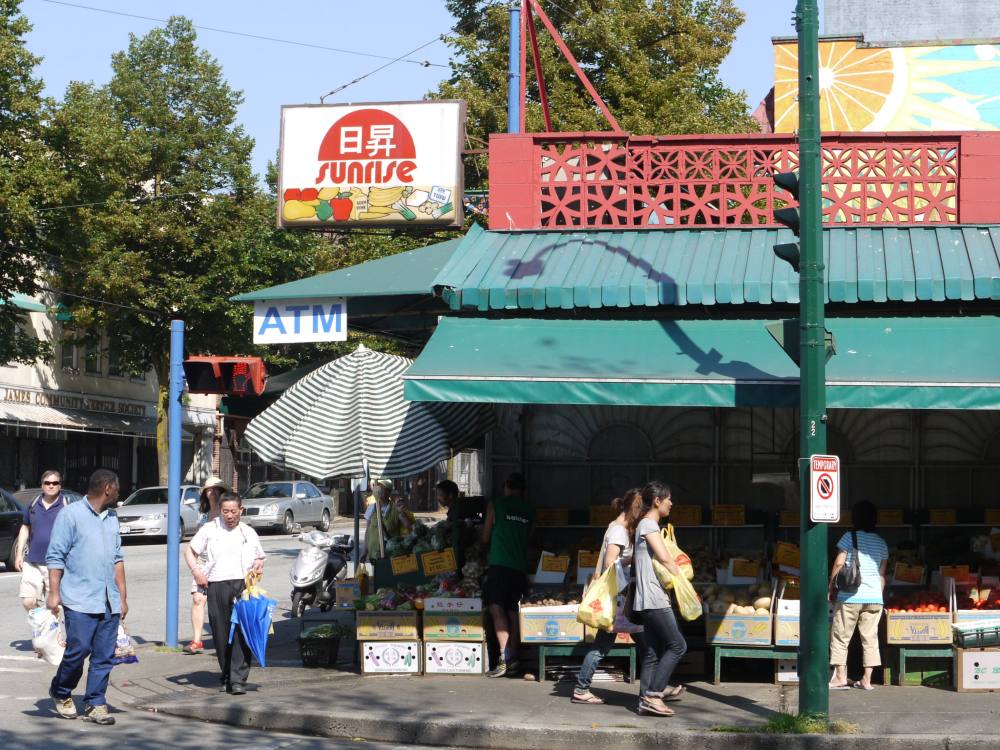
The challenging path ahead
This only scratches the surface of the complexity and challenges in the DTES. How do we move forward?
There is consensus that a co-ordinated approach is necessary. There have been attempts at this in the past. The highest profile being the Vancouver Agreement, which brought all levels of government together for a co-ordinated response to the issues of the DTES.
That agreement operated from 2000-10. Regardless of the awards it won, mostly for process, it was more show than substance, with few measurable results. Many people, both inside and outside the community, have sought similar options. Hopefully, Premier David Eby will prove to be a champion for this. He brings a depth of understanding around these issues and a sincere passion for making this community healthy again. We need to wish him well. Early indications are Mayor Ken Sim is ready to be a willing partner in this work.
There is community concern the new city council will lean heavily on a law and order approach. These concerns have been exacerbated by actions taken to end the tents on Hastings Street. While public safety is an important component of any strategy, it doesn’t mean a narrow police-driven approach. Police have a critical role, though it is not the one they have, too often, been forced to play. They’re neither mental health nor social workers.
Many of the issues police face would be better addressed by people with a different skill set, working in collaboration with police services. But for that to occur, additional resources need to be readily available in the community and there needs to be a new relationship with police.
There is a real disconnect with the community. It is the responsibility of the city, police, the province and others to develop a more collaborative approach with the community on problem solving. The "from on high" approach has been in place for some time and there is no evidence it is working. Now, of course, the issues of trust and lack of shared plans is the reality that needs to be overcome.
I believe that the VPD knows this too. Mayor Sim and his council committed to 100 more police officers and 100 mental health nurses as one of their first actions. We have seen the first meaningful efforts around this promise as the city provided $2.8 million to Vancouver Coastal Health for 58 mental health workers. The mention of workers and not nurses is probably the reality that finding nurses will be very challenging. It will be important to see who these workers are, their connection to the DTES and the extent of their training, if they are not registered nurses. Also, they will be expected to work with police. How that relationship is structured will be critical to its success.
The simple reality is there is no effective long-term strategic plan for the Downtown Eastside. One needs to be put in place, while continuing to act on the immediate mental health, addictions and housing crises facing the community today. A longer-term vision and commitment is necessary, if you believe this plan needs to serve both people’s immediate needs, while stabilizing and revitalizing the DTES as a strong, resilient neighbourhood moving forward. The plan needs to be on two tracks: the people and the neighbourhood.
A successful plan first requires that we dig deeper in our understanding of how we have been meeting needs in the community. This requires the community to have a strong, coherent voice in those discussions and beyond.
While there are many exceptional advocates for the community we have not seen a truly broad-based organization speaking for residents since the demise of the Downtown Eastside Residents Association in 2010. As a young advocate, I recall first hearing about DERA, a new residents’ association that was going to change the area. Over the years DERA evolved into one of the most effective resident voices in our city’s history as it took on issue after issue facing the DTES.
Maybe DERA’s greatest positive was the change in culture of the area and the sense of confidence and pride residents felt in their community. A coherent and collective voice for residents is crucial, if it can be put together by the people in the neighbourhood.
I can find no evidence there has ever been a meaningful evaluation of services in the DTES that measures how they are funded and delivered, or how they are co-ordinated between service providers, service recipients and government. About $550 million is invested in the community every year. While I am certain those dollars are required, and likely more, it is inexplicable that we have never looked to see if we are spending it where it is most needed and having it delivered by the organizations best able to make it work.
There are many excellent organizations in the community delivering critical services that keep people alive and give many an opportunity to make positive changes in their lives. But these organizations and their staff are stretched. It is very difficult and not well-paid work, especially on the frontline.
Currently, most of these workers struggle to stay on top of the increasingly difficult situations they face every day with burnout, too often, being the result. This audit and evaluation of programs and resource allocation shouldn’t be seen as a threat, but an essential early component in creating and implementing a new plan.
A new strategy requires a vehicle to develop and deliver it. Whether it is Vancouver Agreement Two or another model, it needs to include the community and First Nations in a meaningful way. To be successful, such an initiative requires that governments have the political will to provide the resources and real authority to act.
Without committed leadership on this issue, it will flounder. Based on Premier Eby’s comments, the province appears ready to provide that leadership, with Vancouver as a willing partner. For the federal government, while they don’t need to be as engaged, they do need to provide resources and approvals in a number of areas of federal authority.
How First Nations and the community are brought to the table is more complex. It needs to happen, and if all parties are sincere about making it work, it can certainly be achieved.
The Downtown Eastside will always have challenges. Poverty isn’t going away. Mental health and addictions will continue to afflict the community.
But can people’s lives be supported and stabilized, housing and health-care needs met, opportunities created for people to improve their lives, through positive relationships, maybe a job or education? Of course it can happen.
Can a community and a street be revitalized, small business brought back and its spirit relit? Certainly.
If people come together with a sincere, collaborative approach, have a meaningful plan, are determined and resilient, remain gracious and generous with each other, then a better future for the DTES and its people, while it will take time, is possible. ![]()
Read more: Rights + Justice, BC Politics, Municipal Politics


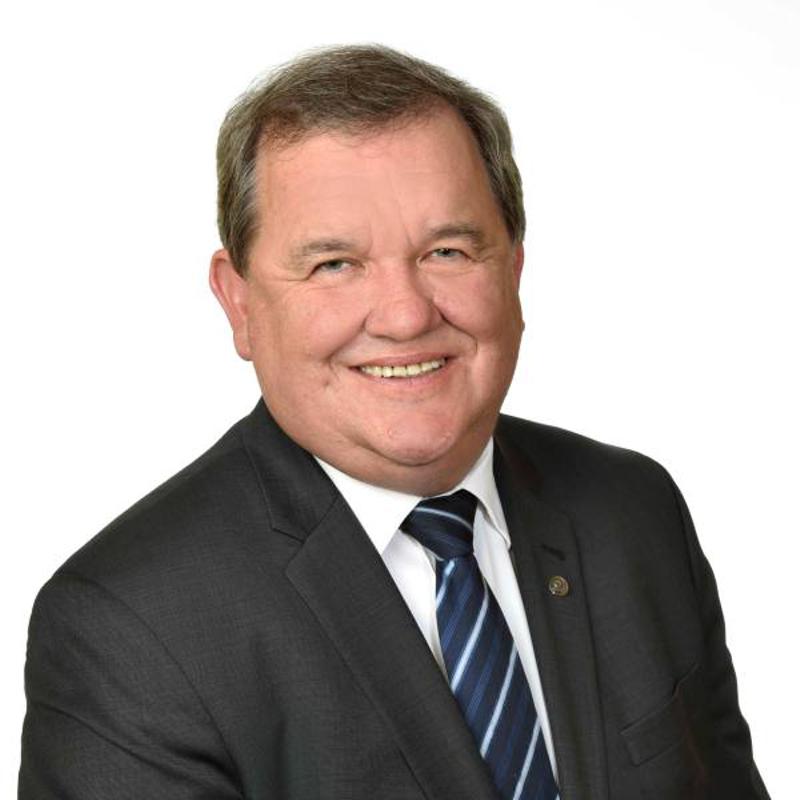

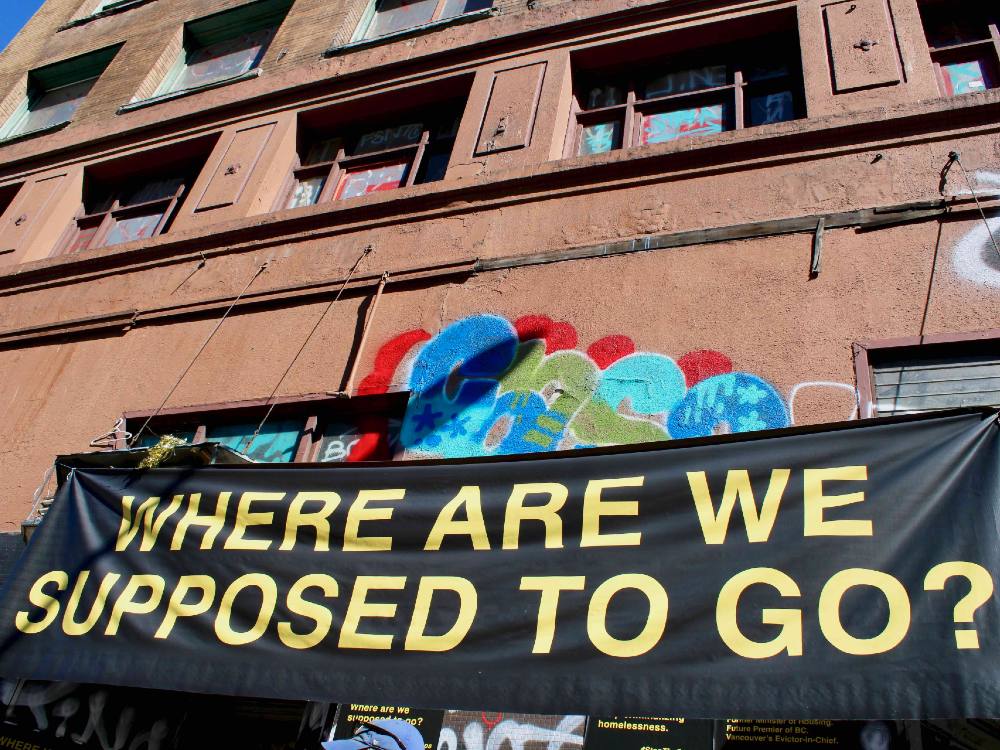












Tyee Commenting Guidelines
Comments that violate guidelines risk being deleted, and violations may result in a temporary or permanent user ban. Maintain the spirit of good conversation to stay in the discussion and be patient with moderators. Comments are reviewed regularly but not in real time.
Do:
Do not: